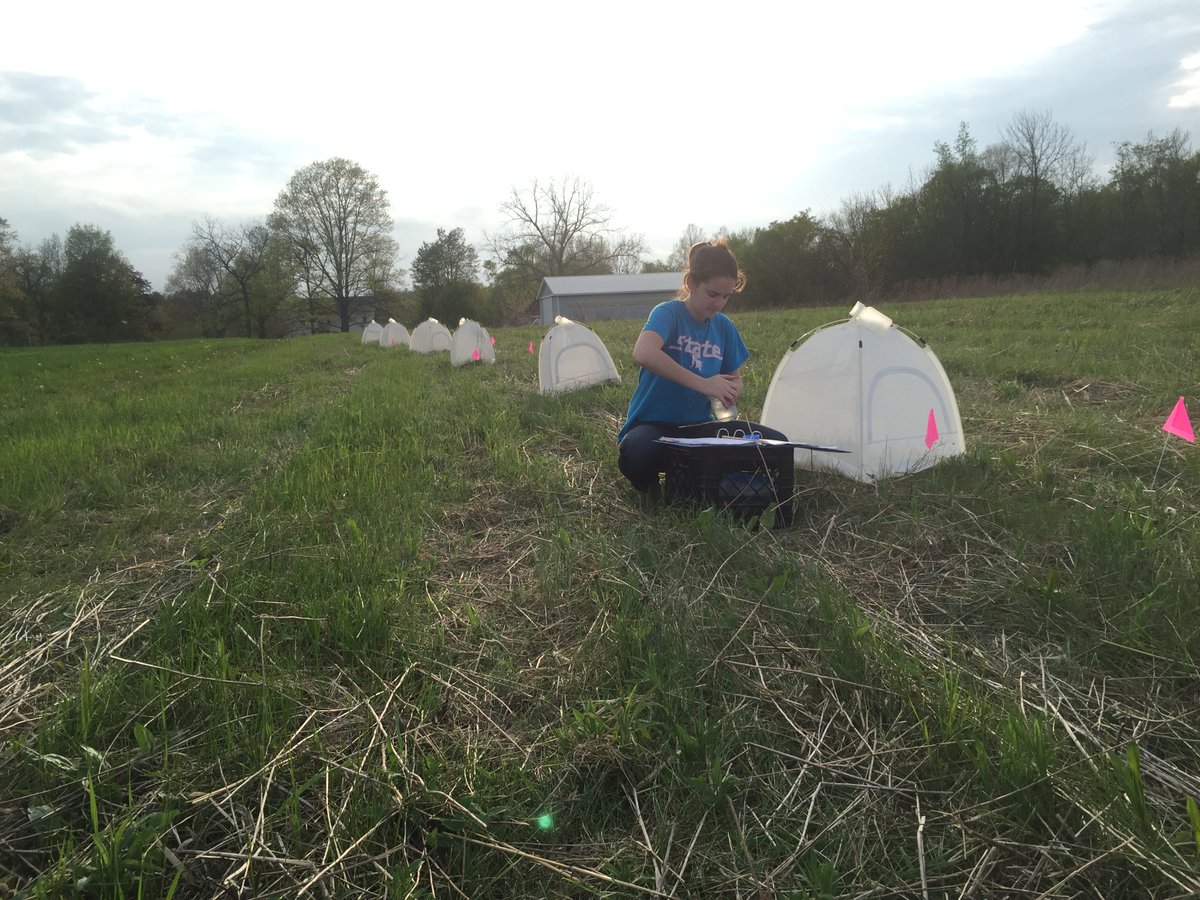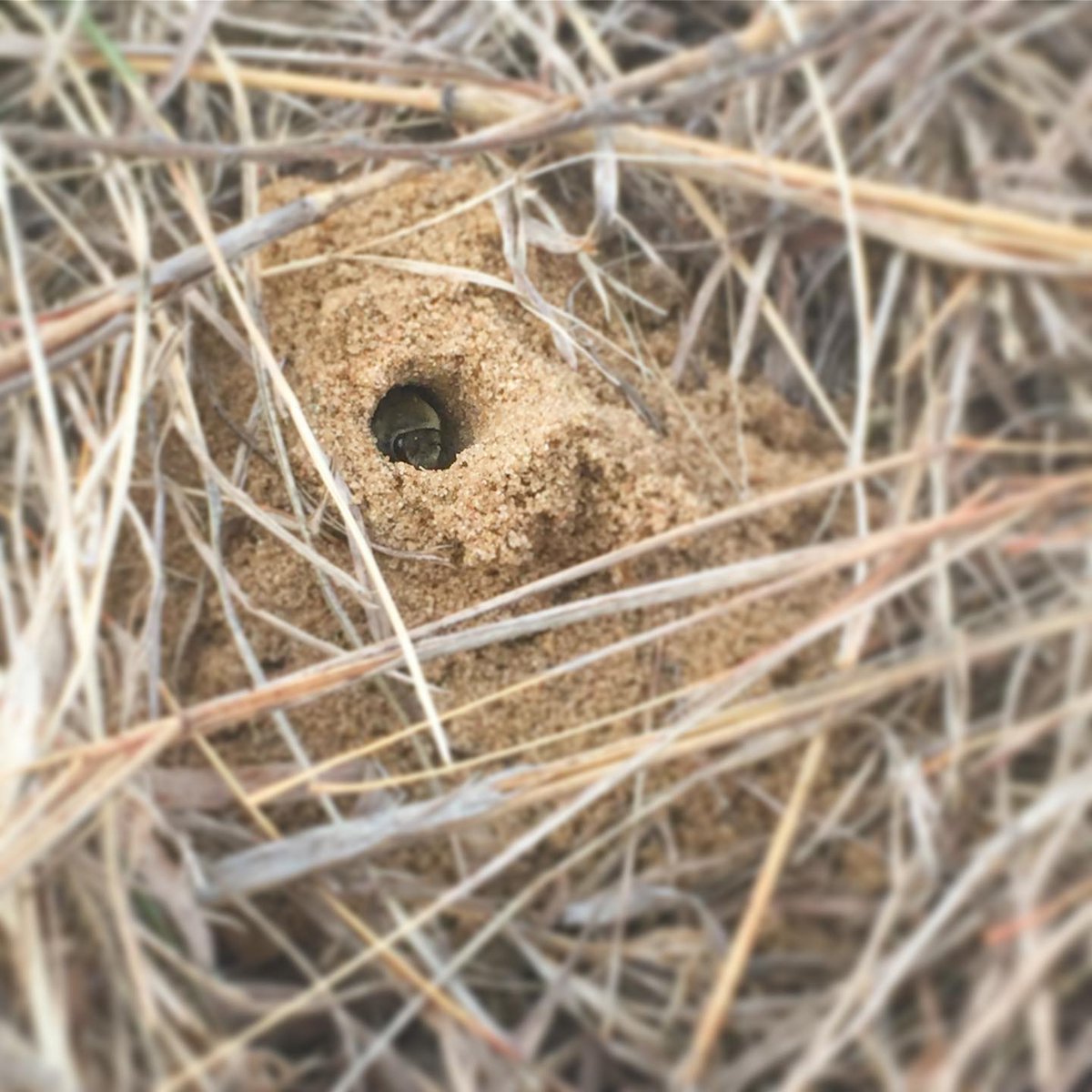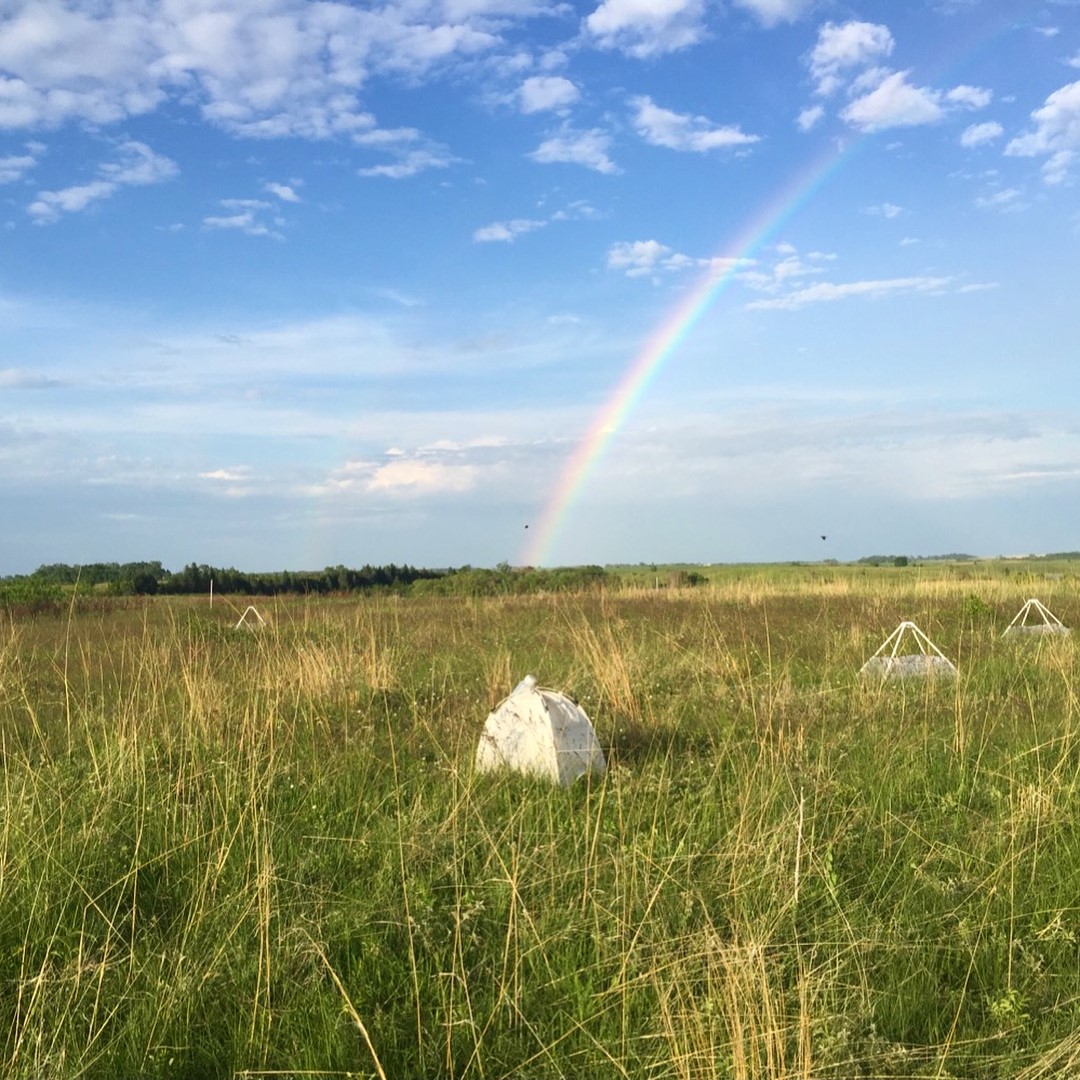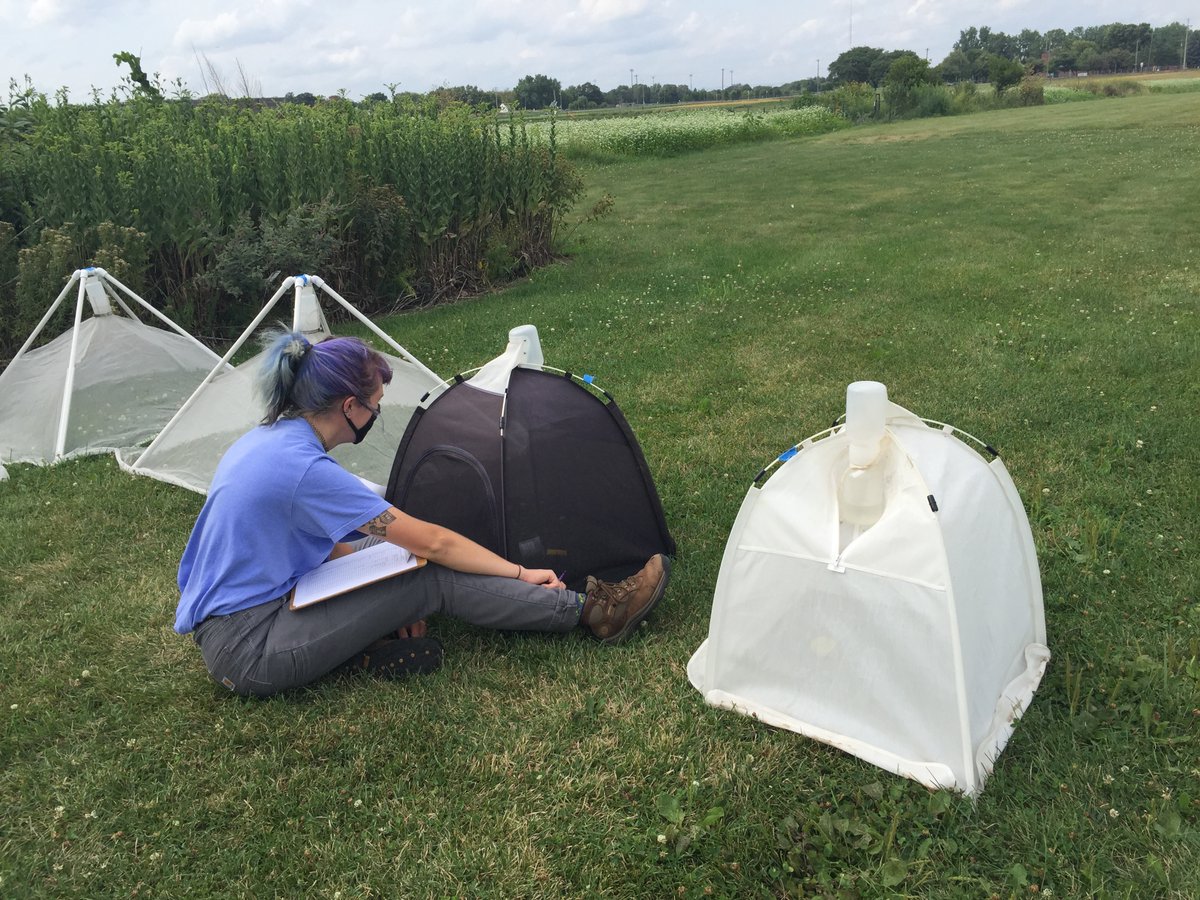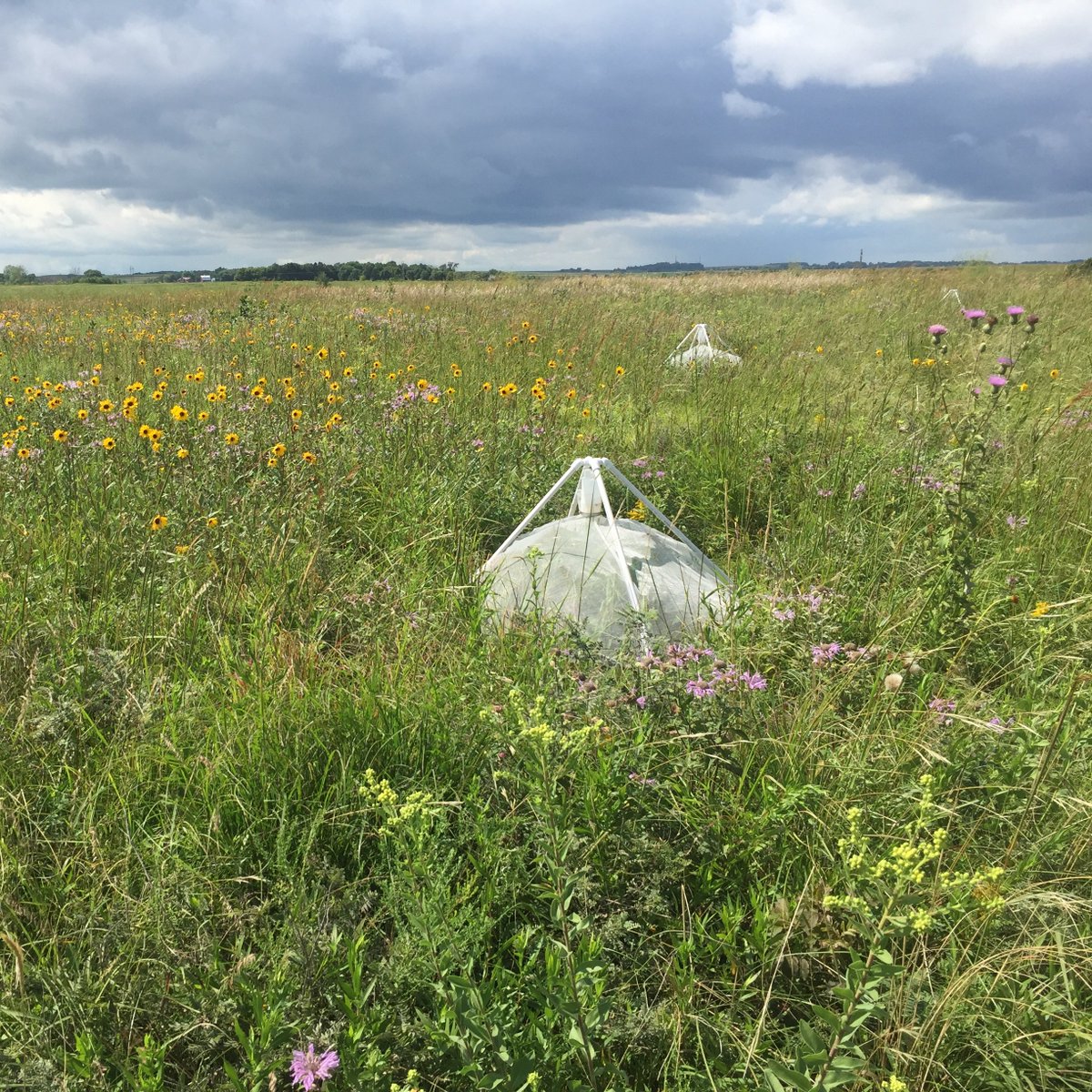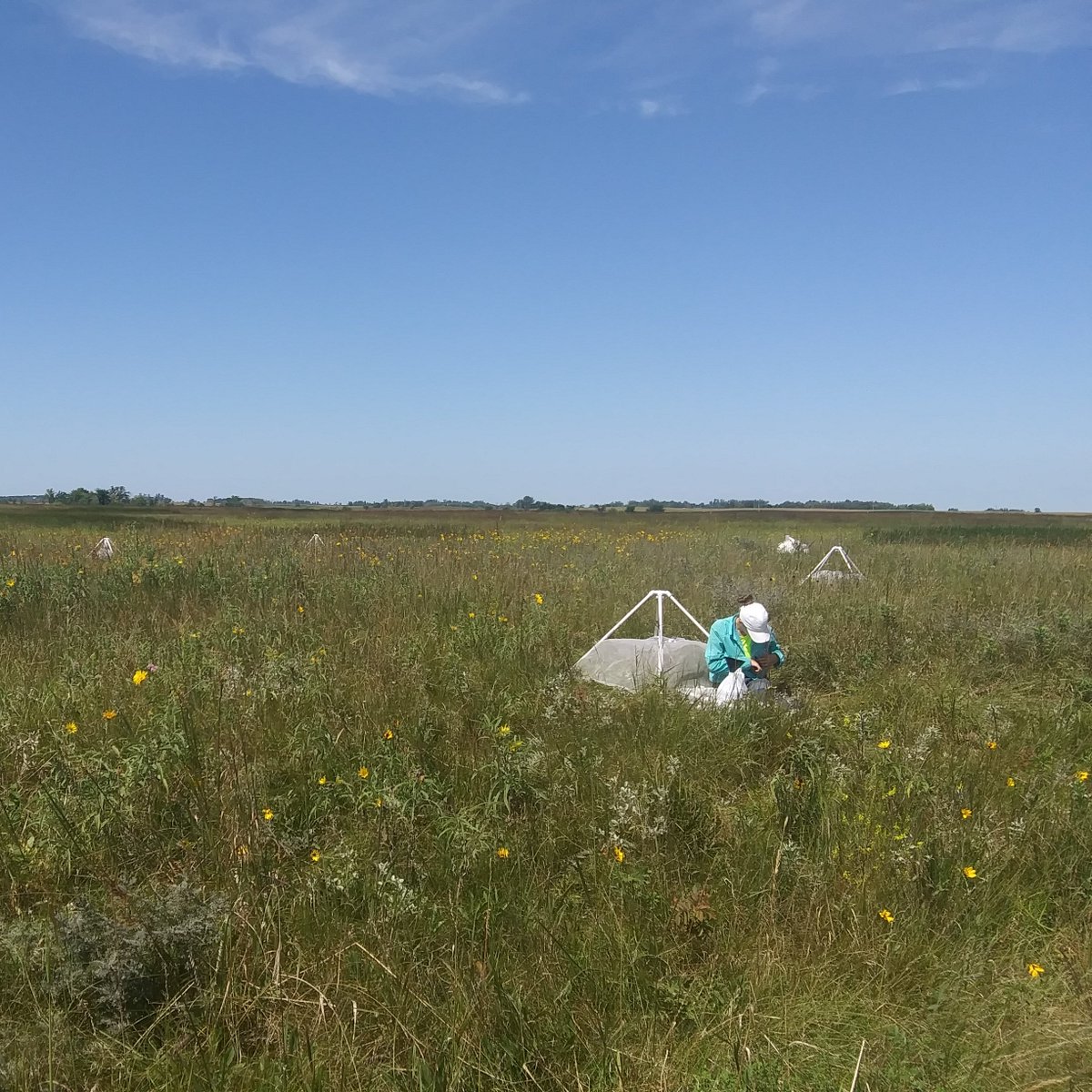Hey #EntSoc20! Are you interested in using emergence traps for ground-nesting #bees but aren’t sure where to start? Check out my talk on the benefits and challenges of using them, plus tips on specimen analysis for better results (a thread)
Despite the fact that over 70% of bees nest underground, there is a huge gap in our understanding of where they nest. Without this information, our #wildbee conservation efforts are limited.
Many researchers will say that #bees like to #nest in open bare soil, but that is largely inaccurate for most species and based on our bias for where we can actually observe them.
Researchers will also say that wildflower plantings provide nesting areas, but we don't have much data to demonstrate that. They could be flying in from their nests in the woods, along the edges of the planting or in the ditch next to the road nearby, we just don't know!
Emergence traps are increasingly being used to study nesting by ground-nesting bees. They are lightweight tents that can be secured to the ground to collect emerging insects.
They are useful because they can scale up bee nesting research to field and landscape scales, they catch bees from nests that would otherwise be unnoticed, and often collect rare bees or bee cleptoparasites with potential hosts.
Unfortunately, they are really expensive (costing $80-$100 each) and labor intensive to use. Plus we don’t have robust studies on their efficacy (but check out Alexa’s poster "Comparing wild bee behaviors among different emergence trap designs"!)
I’ve designed and made over 100 of my own emergence traps with support from @UMNBeeLab_Squad, which helped reduce the cost and make them easier to fix when things break, but we don’t have good information on designs that work best for catching emerging bees.
If you do use emergence traps, make sure to analyze your specimens of mandible and wing wear! Thanks to insight and #protips from @zachportman, this analysis helps to know which bees are coming out of nests made in a previous year or bees that are actively digging their nest.
Doing this wing/mandible wear analysis helps to avoid both *over *and *under* estimation of nests and can help to better assess patterns and trends in your data. It also highlight the importance of working with #naturalists and #taxonomists when analyzing bee data!
In a study where I examined #fire management on bee nesting and was only interested in actively nesting bees, I could only include 65% of the specimens that I collected for analysis.
So much of wild bee research focuses on bee and flower interactions, or bee richness and abundance in response to various conservation actions, but we desperately need more nesting studies! Please prioritize nesting research as you apply for grants and design your research.
Feel free to DM me if you would like to talk more about bee nesting or if you aren’t able to attend #EntSoc20, I will happily share my slides and would love to learn from you too!

 Read on Twitter
Read on Twitter